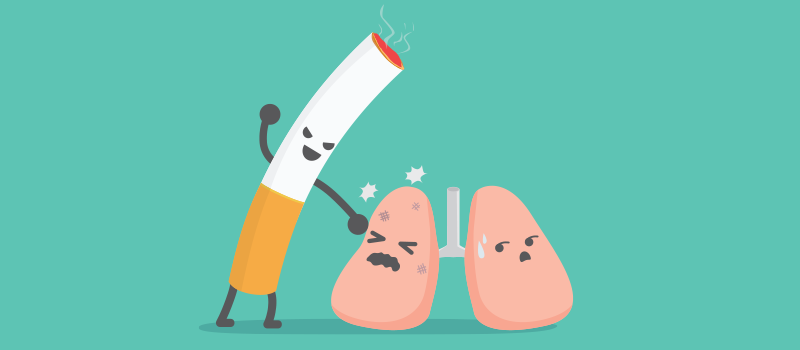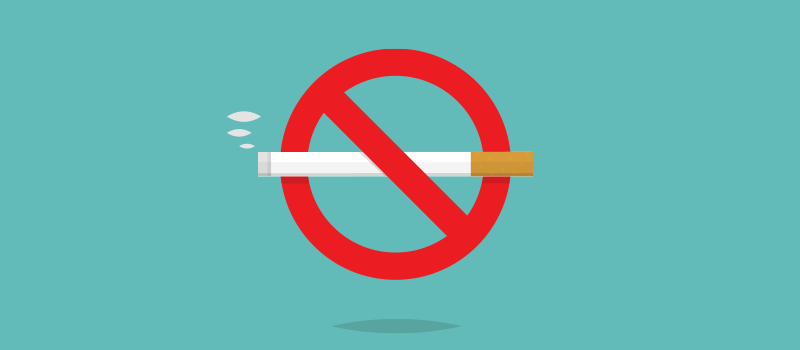What’s the Buzz
The Bee Healthy Blog
How Do Nicotine Patches Work?

Cigarette smoking is the leading preventable cause of disease and death in the United States, accounting for about 1 in 5 deaths. Yet, the Centers for Disease Control and Prevention (CDC) estimates that approximately 12.5% of adults in the US (nearly 31 million Americans) are current smokers.
Nicotine replacement therapies (NRT) can help people quit smoking by reducing nicotine withdrawal symptoms and cravings. NRT is available in various forms, such as nicotine gum, nicotine lozenge, nicotine nasal spray, nicotine inhaler, nicnicototine patch, and others.
If you are struggling with nicotine addiction, please continue reading to understand how nicotine patches work and how they can help you kick the smoking habit.
How does nicotine replacement therapy (NRT) work?
Nicotine replacement therapy (NRT) gives you small doses of nicotine, the main addictive substance in tobacco products.
When you smoke cigarettes or other nicotine-containing products, your brain and other body parts get used to nicotine, leading to physical and psychological dependence. When you quit tobacco, the absence of nicotine in your body causes you to experience withdrawal symptoms and cravings because your body has gotten used to having nicotine.
Nicotine replacement products give you small amounts of nicotine but do not contain any other harmful chemicals present in tobacco products. Using nicotine replacement therapy can help to relieve the physical withdrawal symptoms and increase your chances of successfully quitting smoking.
What’s the difference between nicotine patches versus nicotine gum and nicotine lozenges?
Nicotine inhalers, gums, nasal sprays, and lozenges are faster-acting types of nicotine replacement therapy. So, a nicotine nasal spray works more quickly than a nicotine patch. Similarly, nicotine gums and nicotine lozenges are great at helping you get past strong, short-lived cravings. Keep in mind that the hit or buzz from these fast-acting NRTs is less than what you would get from cigarettes. Nicotine patches provide a slower and more steady dose of nicotine over a longer time duration.
Do nicotine patches actually work?
Many studies have shown using any form of nicotine replacement therapy can almost double your chances of successfully quitting smoking compared to quitting cold turkey. Keep in mind that nicotine patches take some time to start working. You may want to start with combination therapy (a faster-acting form of NRT, such as a nicotine inhaler or nicotine gum) along with nicotine patches when you first attempt to stop smoking.
When is the best time to start using nicotine patches?
You can start using a nicotine patch or another form of nicotine replacement therapy on a quit day. You don’t need to wait before putting on a patch. In fact, it is okay to start using the nicotine patch 1-2 weeks before you stop smoking. This can help you gradually cut down before your quit attempt. However, be sure to quit smoking within a week or two after you begin to use nicotine patches.
How long does the nicotine patch take to work?
It can take up to 8 hours for a nicotine patch to bring nicotine levels in your body to a steady level.
How can I tell if a nicotine patch is working?
You should notice less cravings and withdrawal symptoms within a week of using the nicotine patch. Give NRT at least eight weeks to work.
What strength nicotine patches do I need?
To get the best results from nicotine patches, it’s important to use the correct dose. Nicotine patches come in strengths of 7 mg, 14 mg, and 21 mg. In general, the lower-dose patches work well for light smokers. The dosing is as follows:
- If you smoke less than 7 cigarettes per day, you can use the 7-mg nicotine patch.
- For a smoking habit of 7-15 cigarettes per day, use the 14-mg nicotine patch.
- If you are smoking more than 15 cigarettes per day, use the 21-mg nicotine patch.
You should not wear two nicotine patches at once unless your healthcare provider tells you to.
Over 8-12 weeks, you should be able to use nicotine patches at lower doses and ultimately stop using them altogether.
What happens if you smoke with a nicotine patch on?
If you slip up and smoke while using a nicotine patch, you do not need to stop using nicotine patches. Simply throw away your cigarettes and get back on track with your attempt to quit smoking.
If you’re having many slip-ups, you should talk to your medical professional about how much nicotine replacement you need. You might need a higher dose of the nicotine patches or combination therapy with a faster-acting nicotine replacement therapy (NRT) to reduce cravings.
Do not continue smoking regularly while wearing nicotine patches. This can increase your addiction and tolerance to nicotine. It can also put you at risk of a nicotine overdose. Too much nicotine in the body can cause dangerous problems, including difficulty breathing, high blood pressure, and potentially fatal heart rhythm abnormalities.
Do you get a buzz from nicotine patches?
It depends on how many cigarettes you smoke. Nicotine tolerance can vary greatly from person to person. If you are a heavy smoker with a high tolerance to nicotine, you may not feel anything when using a nicotine patch. Light smokers may get a temporary buzz from nicotine replacement therapy.
Tips on getting the most from nicotine patches
- Remove the patch from the foil package when you’re ready to apply it. Press it down on your skin for 10 seconds to ensure it sticks properly.
- Apply the patch on your upper body, such as your upper arm, inner arm, shoulder, upper chest, or back.
- Put the nicotine patch on dry, hairless, clean skin. Do not put it on oily, wet, irritated, damaged, or scarred skin.
- To avoid skin irritation, apply the patch on a different part of your body every day. Do not wear it in the same spot more than once a week.
- Wear the nicotine patch for 24 hours (read package instructions for the exact timeframe). If a patch falls off, apply a new patch.
- You can leave the patch on when showering or bathing.
- Nicotine patches can sometimes give you vivid dreams. If this happens, take the patch off at night and put on a fresh one in the morning.
- Wash your hands with soap and water after you apply a nicotine patch to get rid of residual nicotine.
- Keep new and used nicotine patches safely out of reach. Even used patches contain enough nicotine to make children and pets sick. Call the National Poison Control Center at 1-800-222-1222 or go to your nearest emergency room in case of a nicotine overdose.
- If you have many cravings or slip-ups while using nicotine patches, you may not be on a strong enough dose. Talk to your healthcare provider about the recommended dose. Consider using combination therapy, i.e., adding a nicotine mouth spray, gum, or lozenge.
Most people who are trying to quit nicotine use need to try several times before they are successful in stopping smoking completely. Compared to quitting cold turkey, using nicotine patches and other types of nicotine replacement therapy (NRT) can relieve cravings and increase your chances of successfully quitting smoking.
References:
- https://www.cdc.gov/tobacco/data_statistics/fact_sheets/adult_data/cig_smoking/index.htm
- https://www.cancer.org/healthy/stay-away-from-tobacco/guide-quitting-smoking/nicotine-replacement-therapy.html#
- https://www.cdc.gov/tobacco/campaign/tips/quit-smoking/quit-smoking-medications/how-to-use-quit-smoking-medicines/how-to-use-a-nicotine-patch.html








SOCIAL